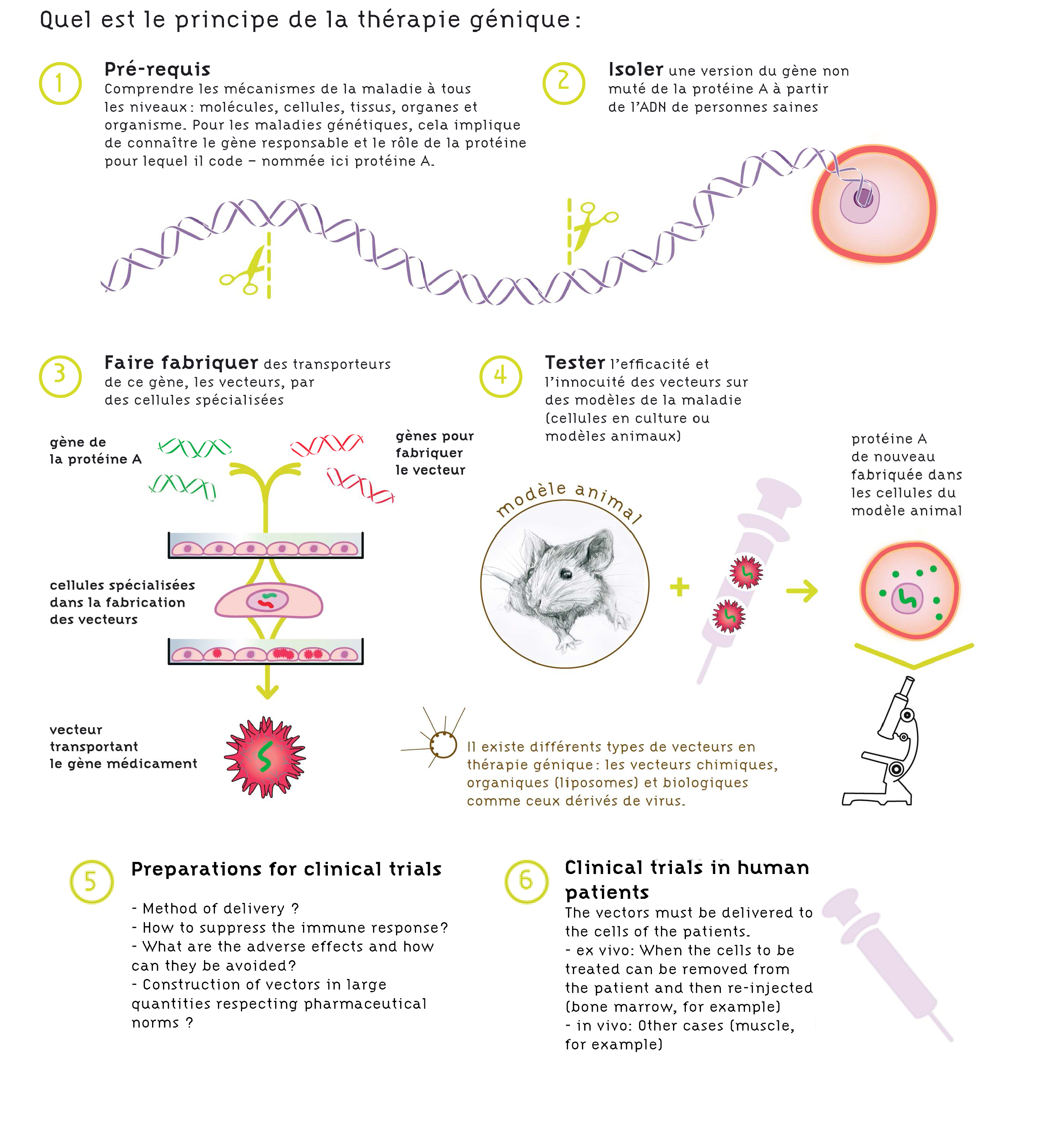Gene therapy is one of the most promising of the innovative therapies. It involves using a gene-drug for therapeutic purposes.
Scheme to be translated soon. We apologize for the inconvenience.
The cells of our body behave like little factories. In addition to other functions they produce the proteins necessary for the proper function of our organism. Pancreatic cells, for example produce insulin, and muscle cells produce dystrophin. Thus the cells of our body manufacture hundreds of thousands of different protein thanks to the plans furnished by our DNA, the famous genes. When a gene is defective, the protein which it encodes is manufactured incorrectly and does not play its role.
To solve this problem, scientists have therefore thought to furnish the cells with a correct plan, without the mutation, i.e. provide them with a healthy gene so that the cells could produce a correct form of the defective protein: this is the principle of gene therapy. Although the theory is simple, it is much more complicated in practice.
Gene therapy assumes that we know either the genetic defect which causes the disease so that we can provide the cell with a functional copy of the missing or defective gene, so that the function of the inserted gene can correct the pathologic mechanism which causes the disease.
In practice it is also assumed that we have figured out the genetic engineering manipulations necessary. We have to isolate the gene-drug and then, if we want specific types of cells to express the desired protein, we have to add a “promoter” to the gene, i.e. a short DNA sequence which regulates the expression of the gene. Then we have to find a way to transport the gene-drug to the nucleus. This is the role of the vector.
For rare and frequent diseases
The first diseases which have profited from research on gene therapy have been rare genetic diseases for which the responsible gene had been identified, in particular the severe immune deficiencies. These are the bubble babies, in which the treatment has proven its efficacy for several years now.
Gene therapy has also produced early results for other diseases:
- Adenoleukodystrophy: in 2009, two children who suffered from a severe genetic disorder of the brain, X-linked adenoleukodystrophy, were treated by gene therapy. The progress of this disease was arrested. This result opens up perspectives for numerous neurodegenerative disorders.
- Beta-thalassemia: in 2010 a young patient with a severe blood disorder, beta-thalassemia, was able to resume a normal life without the usual monthly transfusions, thanks to gene therapy. This led to an unprecedented hope for some genetic diseases which are the among the most widespread globally.
- Leber’s optic neuropathy: In 2005 scientists succeeded in restoring the vision of puppies with Leber’s optic neuropathy, a genetic disorder. A human trial began in 2011 for patients whose only hope is not to lose their sight.
Gene therapy trials are on the increase and clearly constitute one of the privileged paths towards the treatment of many diseases, including certain cancers.


